Overview
The Akida Neural Processor
BrainChip’s Akida integrated circuit technology is an ultra-low power, high performance, minimum memory footprint, event domain neural processor targeting Edge AI applications. In addition, because the architecture is based upon an event domain processor, leveraging fundamental principles from biological SNNs, the processor supports incremental learning. This allows a deeply trained network to continue to learn new classifiers without requiring a re-training process. Due to the highly optimized architecture, the Akida Neural Processor eliminates the need for a CPU to run the neural network algorithm and in most cases eliminates the need for a DRAM external to the neural fabric. The elimination of external devices makes the Akida solution significantly more power efficient compared to deep learning accelerators which require both external CPU and memory.
Built around a mesh-connected array of neural processor units (NPUs) the architecture is highly scalable to meet the needs of a wide range of applications. The uniqueness of the BrainChip Akida Architecture lies in the ability of the hardware to run traditional feedforward, deeply learned CNN networks as well as native SNN networks. This documentation provides examples of how to develop both classes of solutions, using industry standard tool flows and networks, to solve a variety of application problems such as vision, acoustic, cybersecurity amongst others.
The Akida neural processor is available both as Intellectual Property (IP) circuit design for integration in ASIC products or as a System on a Chip (SoC) product.
As Figure 1 shows, the SoC is built around a core neural processor comprised of 80 neural processing units, it includes a conversion complex and allows one to run popular convolutional neural networks (CNNs) such as MobileNet 1. Designers can use the Akida SoC to run industry standard CNNs, dramatically reducing power by changing convolutions to event based computations, or run native SNN solutions.
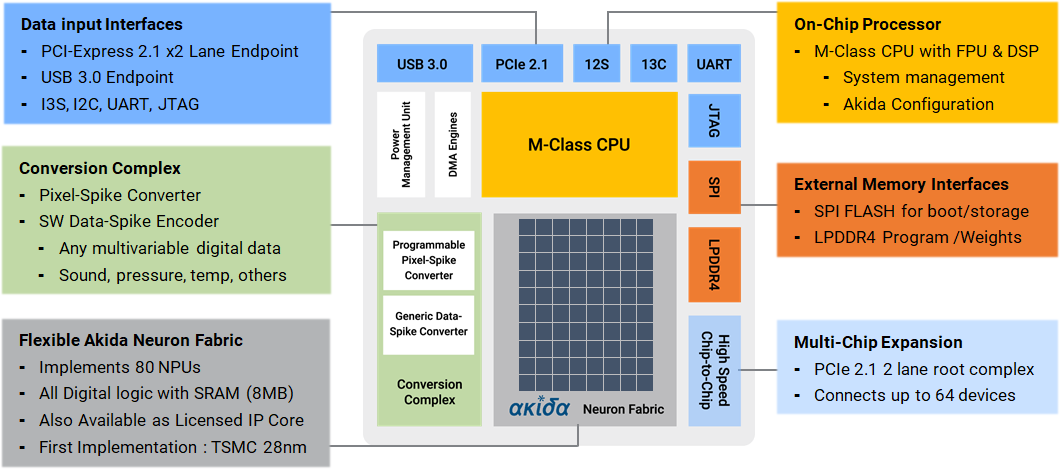
Figure 1. BrainChip Akida processor
The Akida chip includes several key features that differentiate it from other neural network processors and deep learning accelerators. These are:
Event-based computing leveraging inherent data and activation sparsity
Fully configurable neural processing cores, supporting convolutional, separable-convolutional, pooling and fully connected layers
Incremental learning after off-line training
On-chip few-shot training
Configurable number of NPUs
Programmable data to event converter
Event-based NPU engines running on a single clock
Configurable on-chip SRAM memory
Runs full neural networks in hardware
On chip communication via mesh network
On chip learning in event domain
Process technology independent platform
Network size customizable to application needs
IP deliverables include: RTL, dev tools, test suites and documentation
Figure 2 shows several examples of IP configurations that could be envisioned. Because the architecture is based upon a neural processing unit which is arrayed and mesh connected, the number of NPUs per solution is dependent upon the application need.
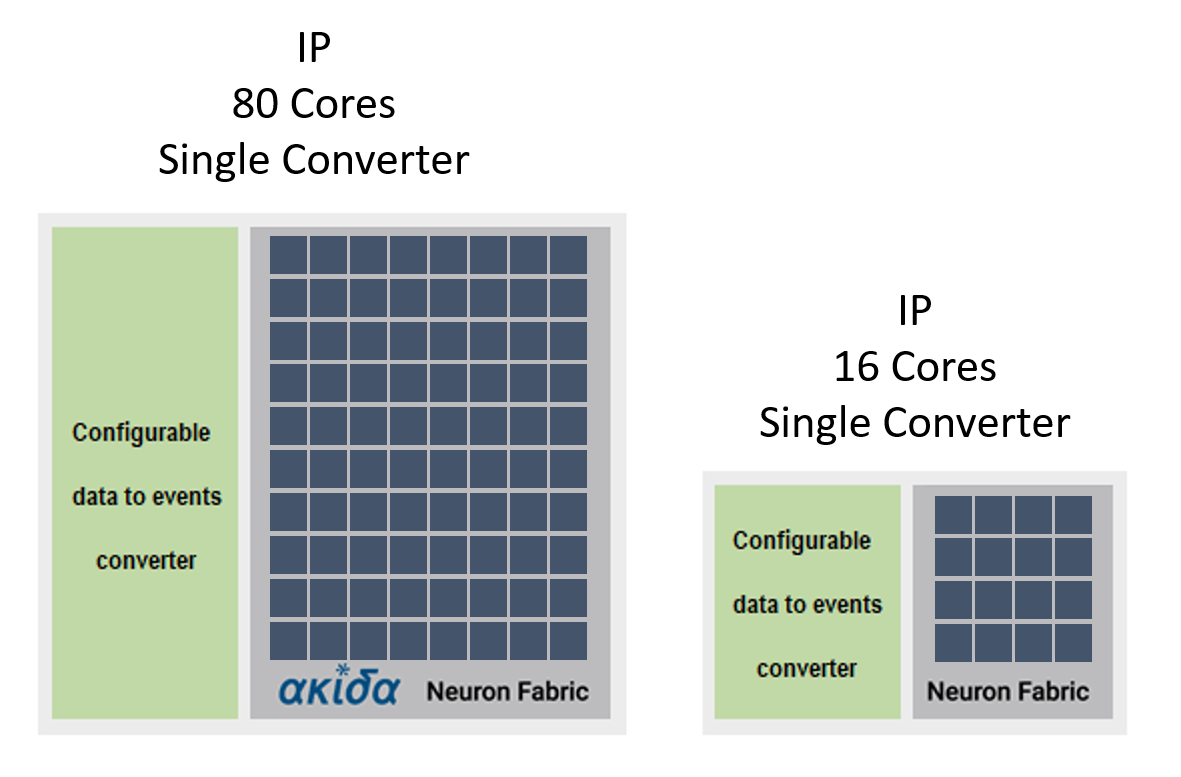
Figure 2. Akida IP example configurations
The Akida Neuromorphic ML Framework
The Akida Neuromorphic ML Framework (MetaTF) relies on a high-level neural networks API, written in Python, and largely inspired by the Keras API.
The core data structure used by the Akida runtime is a neural network model, which itself is a linear stack of layers.
MetaTF leverages the TensorFlow framework and PyPI for BrainChip tools installation. The major difference with other machine learning frameworks is that the data exchanged between layers is not the usual dense multidimensional arrays, but sets of spatially organized events that can be modelled as sparse multidimensional arrays.
Throughout this documentation, those events will often be referred as “spikes”, due to their close similarity with the signals exchanged by biological neurons.
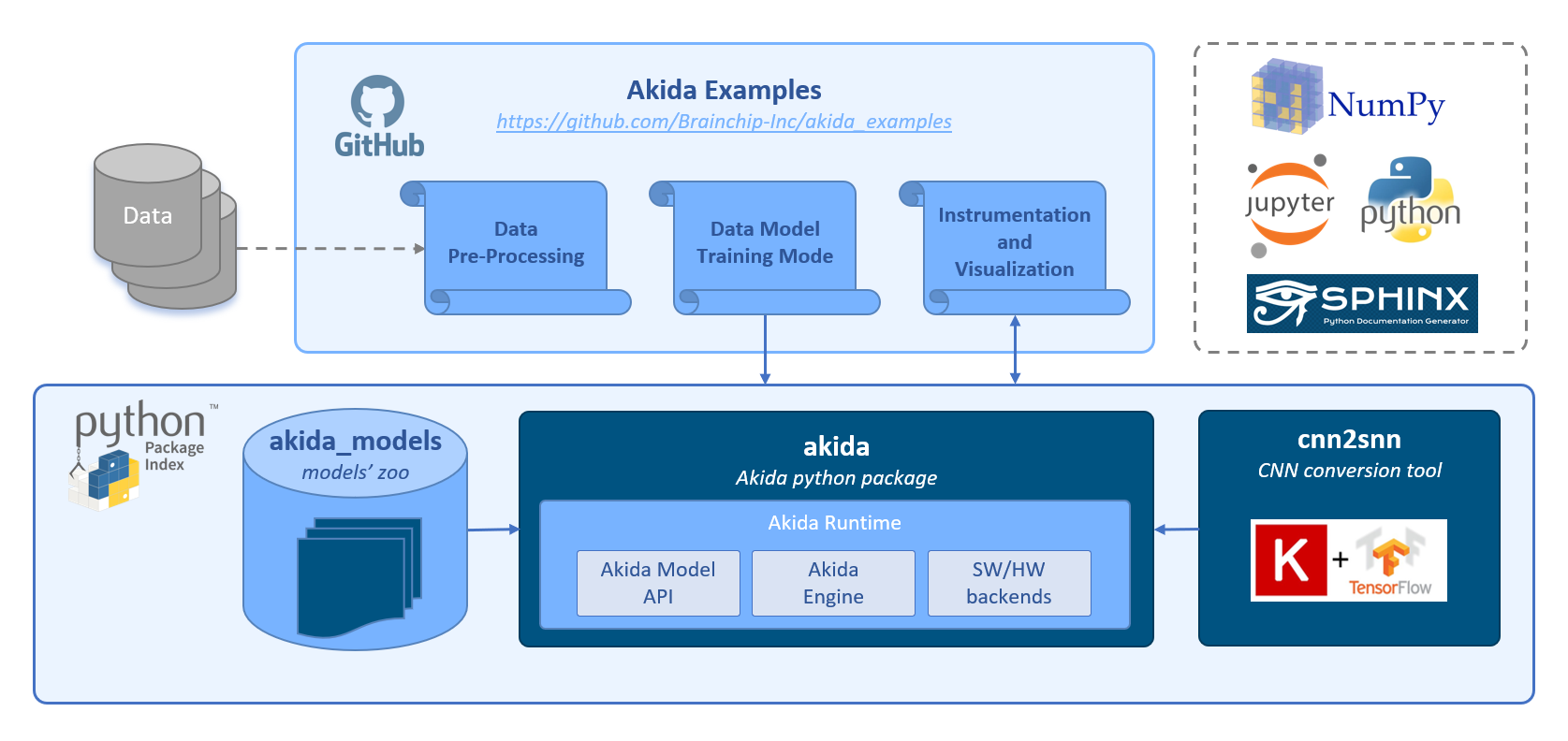
Figure 3. Akida MetaTF ML Framework
The MetaTF ML framework comprises three main python packages:
the Akida python package is an interface to the Brainchip Akida Neuromorphic System-on-Chip (NSoC). To allow the development of Akida models without an actual Akida hardware, it includes a runtime, an Hardware Abstraction Layer (HAL) and a software backend that simulates the Akida NSoC (see Figure 4 and Figure 5).
the CNN2SNN tool provides means to convert Convolutional Neural Networks (CNN) that were trained using Deep Learning methods to event domain, low-latency and low-power network for use with the Akida runtime.
the Akida model zoo contains pre-created network models built with the Akida sequential API and the CNN2SNN tool using quantized Keras models.
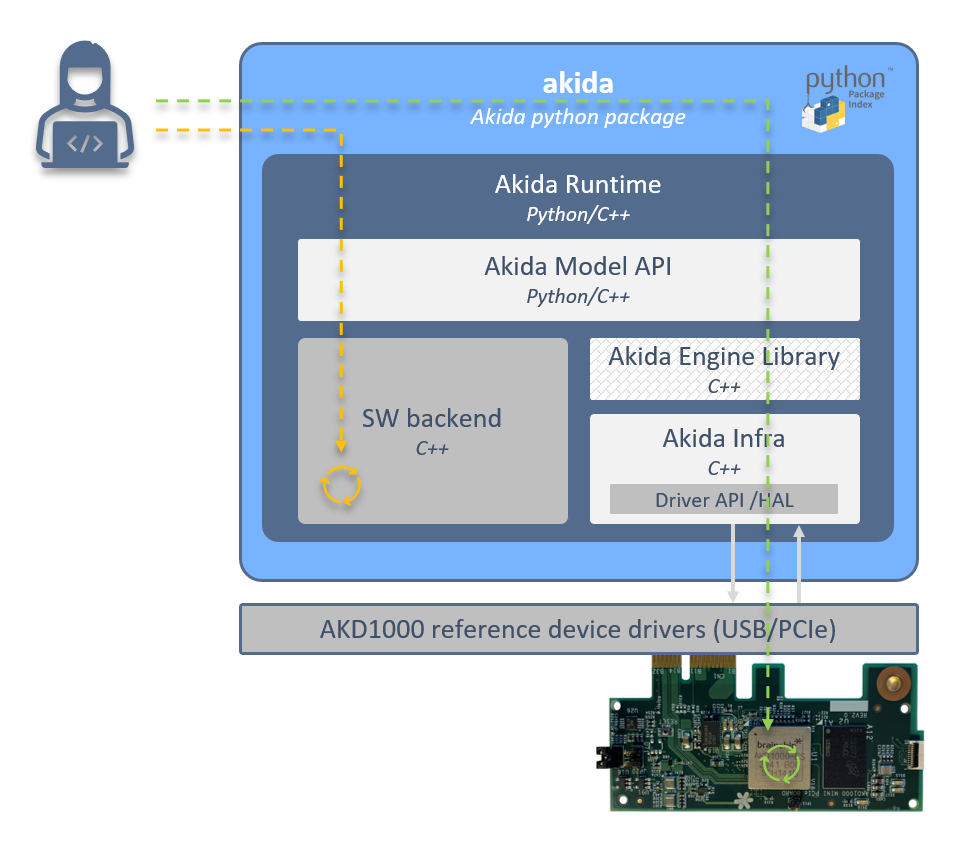
Figure 4. Akida python package
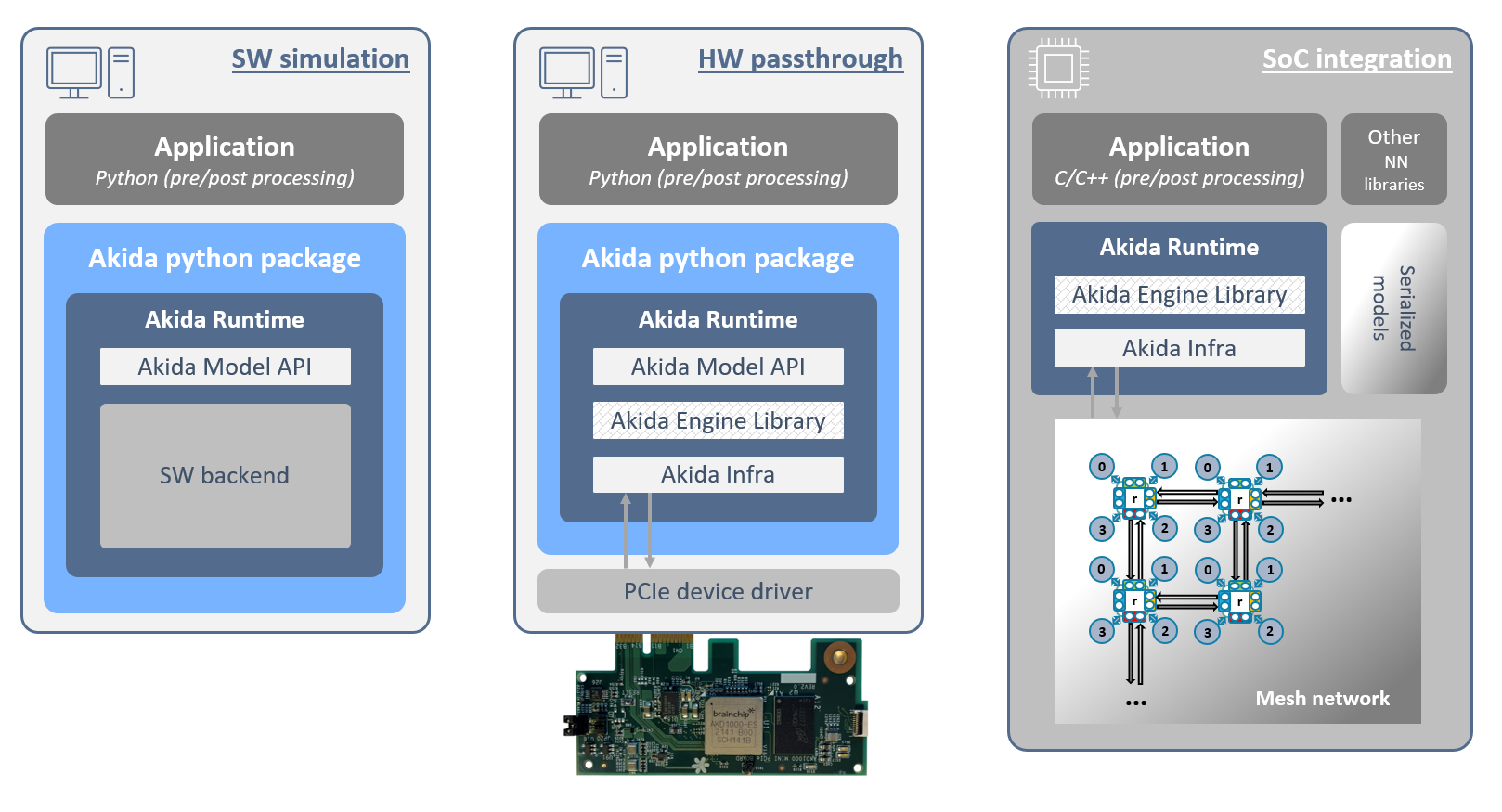
Figure 5. Akida runtime configurations
The Akida examples
The examples section comprises a zoo of event-based CNN and SNN tutorials. One can check models performances against MNIST, ImageNet and Google Speech Commands (KWS) datasets.
Note
- 1
In most cases the entire network can be accommodated using the on-chip SRAM. Even the large MobileNet network used to classify 1000 classes of ImageNet fits comfortably.